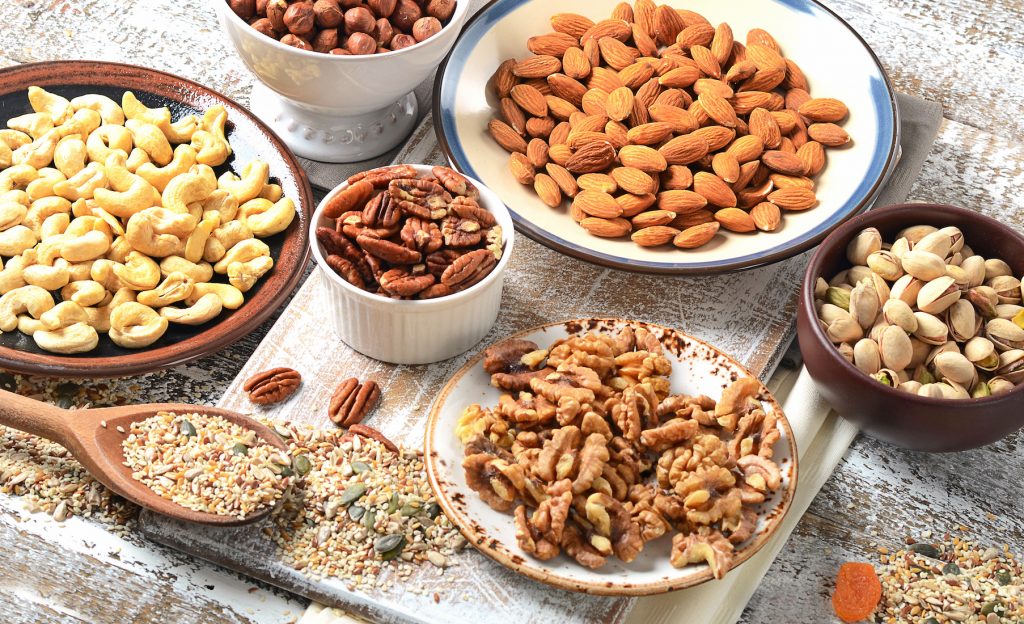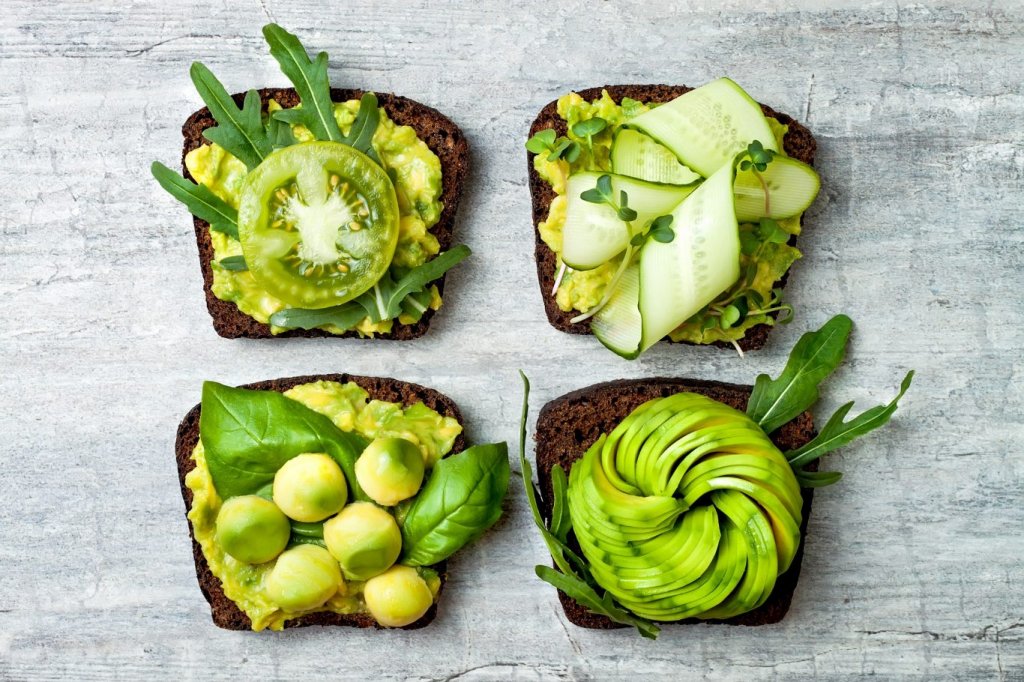Fall Prevention for Older Adults: Why Falls Happen & How to Prevent Them
Fall Prevention for Older Adults: Why Falls Happen & How to Prevent Them
We’ve all taken a tumble before. Most of the time, the worst injury we sustain is a bruised ego. But as our years progress, falling can become less of an embarrassment and more of an emergency situation.
Many falls result in fractures, which may result in lengthy hospital stays, unwanted medical expenses, and even disability or loss of mobility or independence altogether.
Studies have found:
- An American senior visits an emergency room with a fall-related injury every 11 seconds.
- “Falls are a strong predictor of placement in a skilled-nursing facility.”
The thought of a fall can be unsettling as we get older. While it’s a natural concern, the good news is that falls don’t need to be an inevitable part of aging. There are several proven ways to prevent falls in the elderly, allowing us and our loved ones to stay active and independent for much longer.
Who Falls and When?
Although older adults with comorbid health conditions are more likely to suffer a fall, even healthy older adults are at a greater risk of falling as compared to their younger peers.
Every year, over 1 in every 4 older adults (aged 65 and older) experiences a fall.
“Most injuries in the elderly are the result of falls,” according to the Institute of Medicine. “Fractures of the hip, forearm, humerus, and pelvis usually result from the combined effect of falls and osteoporosis.”
Here are more stats about falls:
- Approximately 800,000 adults are hospitalized every year due to injuries resulting from falls.
- Roughly 20% of falls among older adults result in serious injury (e.g., fracture or head injury).
- More than 95% of hip fractures are caused by falling.
- The risk is 4.5 times greater for those who experienced a severe TBI. Falls are the primary reason seniors are one of the highest-risk groups for concussions and traumatic brain injuries. Research shows even a single head injury can lead to dementia later in life.
- More women fall than men.
- Among older adults who fall, less than half inform their physician.
- Hip fractures are predictive of admission to nursing homes and care facilities.
- Falls are the leading cause of “fatal and nonfatal injuries among older adults.”
- A single fall doubles the chance of a subsequent fall.
The fear that sticks around after a fall can be a thief of joy. Even for those who fully recover from a fall, the fear of another trip to the hospital can change their activity levels. They may spend more time at home, isolating themselves and limiting social interactions.
Moreover, the journey doesn’t end at discharge. Many people experience post-hospital syndrome, facing a new set of challenges after leaving the hospital. The stress of hospitalization can leave you feeling fatigued, weaker than before, and with nutritional deficiencies. This can make it difficult to get back on your feet, impacting not just you but also your loved ones who want to support you.
Why Do Seniors Fall More?

A number of factors make seniors more susceptible to falling. Let’s take a look at some of the most common.
Physiological Factors
Significant fall risk comes from physiological factors such as the loss of muscle mass as we age, called sarcopenia, can cause weakness, fatigue, and difficulty standing and walking.
Sarcopenia not only makes falls more likely, but the loss of muscle mass also makes it more difficult for us to bounce back after a fall.
Hearing, Balance, and Vision Changes
Our hearing and balance systems are closely connected and particularly sensitive to the reduced blood flow that is often a hallmark of aging.
Thus, poor balance can be caused by age-related conditions like cardiovascular disease, low blood pressure, neurological disorders, and diabetes. Similarly, vision problems, also common as we age, can negatively affect our perception as well as our ability to see obstacles and lead to falls.
Cognitive Challenges
As we age, it’s natural for our bodies to change. Sometimes, these changes can affect our memory, thinking, and balance. This can make it a bit harder to stay steady on our feet, increasing the risk of falls.
Studies note, “Patients with cognitive impairment may experience up to 20 times more falls than asymptomatic older individuals.”
Side Effects of Prescription Medications
The average older adult takes four or more prescription drugs to manage age-related diseases.
Many medications can contribute to falling because they can make us less alert or slow our reaction times. These include anti-anxiety medications, allergy and sleep aids, tricyclic antidepressants, and prescription sleep drugs like Ambien.
Safety Hazards
Safety hazards like slippery floors, loose rugs, and poor lighting in our homes can also lead to falls.
In fact, the National Council on Aging notes 60% of falls happen in the home. Home-based accidents can be particularly dangerous for those who live alone.
What Increases Your Chance of Falling?
While the risk of falling increases with age, simply getting older isn’t generally the only cause of falls. Other factors that may increase the risk of falling include:
- Muscle weakness. Many older adults have lost some degree of muscle strength or tone, which can affect overall physical fitness.
- Balance and gait problems. People with balance issues or those who shuffle when they walk have proven to be at higher risk for falling.
- A drop in blood pressure when standing (postural orthostatic hypotension or POTS). The common “head rush” feeling when standing up too quickly after being seated or lying down can cause dizziness and even fainting, which can result in a fall.
- Confusion. Older adults (particularly those suffering from any form of cognitive decline) may experience confusion, such as waking up and not remembering where they are, which can lead to accidents.
- Bad footwear. Choosing quality shoes with good traction can go a long way towards a more secure footing.
- Medical conditions. Older adults are naturally more likely to have comorbid health conditions, from high blood pressure to diabetes to cancer; many of the symptoms (not to mention treatments) of these conditions can affect your balance, strength, or cognition, which could increase your risk of falling.
- Medications. Psychotropic medications, in particular, can often cause side effects such as dizziness or lightheadedness, which may affect balance and coordination.
- Impaired vision. Eye conditions that interfere with any aspect of vision can lead to tripping or falling.
- Environmental factors. While falls can happen rather spontaneously, more frequently, some kind of hazard acts as a precipitating factor—an icy sidewalk, furniture that’s slightly out of place, or someone leaving their shoes where you can trip over them are all more about your surroundings than they are about you.
Osteoporosis: Turning Falls into Fractures
One of the most important conditions related to falling and fractures is osteoporosis.
Fifty-four million Americans age 50 or over have (or are at risk for) osteoporosis, a bone disease that primarily decreases one’s bone mineral density (BMD). Osteoporosis makes bones less dense, more brittle, and therefore more prone to breaking. It causes two million fractures a year and costs the US over $19 billion in healthcare spending.
Having osteoporosis may not directly increase your risk of falling, but those who have the condition are more likely to suffer a fracture or other injury when falls do occur. It’s also a “largely preventable” condition.
Here are some general tips for good bone health:
- Stay physically active. In particular, weight-bearing exercise or strength training shows the most benefit for strengthening bones.
- Maintain a healthy diet. Calcium and vitamin D, along with a nutritious diet overall, are critical for bone health.
- Stop smoking and avoid excessive alcohol intake. Both of these have been shown to reduce bone density.
- Have your risk assessed. Screening for osteoporosis is possible. A simple screening by your doctor can show if you need a bone mineral density test. Increased screening, assessment, and treatment for osteoporosis, particularly for high-risk individuals, would prevent “6.1 million fractures over the next 22 years while reducing payer costs by $29 billion and societal costs by $55 billion.”
Although preventing or treating osteoporosis may not directly decrease the risk of falling, it may go a long way towards improving the outcome for those who do suffer a fall.

Fear of Falling Can Exacerbate the Problem
Given that falling and fractures can have a major impact on quality of life, it’s not surprising that many older adults experience a fear of falling. Unfortunately, this fear has been shown to lead to (among other things) self-imposed restriction of certain activities, which can itself lead to a decline in quality of life.
Any decrease in physical activity for older adults has the potential to kick off a vicious cycle: Restriction of activities may lead to a decrease in overall physical activity, which can increase the time spent sedentary. Both factors (less physical activity plus more sedentary activity) increase the risk for all-cause mortality in older adults.

Assessing the Risk of Falling
Over the last few decades, experts have come up with many ways to assess the risk of falling. This is a complicated process that can sometimes involve subjective judgments, such as a practitioner’s appraisal of a patient’s gait and walking speed as they walk from the waiting room to the exam room, for example.
Doctors may screen all older adults for fall risk by assessing just these three factors:
- Falls and/or fall-related injuries sustained in the previous year
- A fear of falling
- A feeling of unsteadiness when walking or standing
Although many factors make assessing fall risk complex for practitioners, these three factors were found to be the most predictive of whether an individual will fall.
If one of the above three factors is recognized, the doctor should perform a more thorough assessment involving objective measures of balance, walking speed, and muscle strength.
Those who have suffered recurrent falls or a hip fracture, as well as anyone with a balance, muscle strength, or walking/gait disorder, are automatically considered high-risk for a fall.
How to Prevent Falls in the Elderly
If you want to stay independent as long as possible, it’s worth taking steps to mitigate your risk of falling and injury. Here are some things that can help.
1. Staying Physically Active
Americans overall are trending towards a more sedentary lifestyle. Older adults are the most sedentary group of individuals. Specifically, this group needs fall prevention exercise programs that target the following.
Strength Training
Weight-bearing exercise can improve bone mass and reduce the effects of osteoporosis. Not only does strength training fortify your bones, but it also builds muscle mass—something that older adults tend to have less of.
Between the ages of 50 and 70, our muscle mass decreases by about 8% per decade. A strength or resistance workout three times a week can significantly improve endurance, power, and bone density while also reducing frailty, chronic diseases, and fall risk. Using evidence-based interventions, balance can be improved significantly in as little as 8 weeks.
We recommend doing 2-3 days of balance and strength training per week. Rest assured, you don’t need to spend countless hours at the gym. As little as 20 minutes goes a long way.
Please check with your doctor before starting a new exercise program, but the following is generally recommended for helping prevent falls in elderly people:
- Toe stands
- Knee curls
- Leg extensions
- Standing heel raises
- Lunges
- Side stepping
- Backwards walking
Balance Training
Gentle yoga and tai chi are good examples of exercise regimes that can improve your balance, which reduces your risk of falling.
Flexibility
Increasing your range of motion can help aid balance and coordination.

2. Receiving Routine Medical Care
Practitioners should screen all adults over the age of 65 for both osteoporosis risk and fall risk.
In particular:
- Be honest with your doctor about any falls or injuries sustained from falling; your risk for falling and subsequent injury increases substantially after each fall.
- Review your medications with a doctor or pharmacist. Knowing the potential side effects of the drugs you take can help you evaluate your fall risk. While speaking with your doctor, express any concerns you may have about your balance.
- Have your hearing checked annually. The fall risk for older adults with hearing loss is 2.4 times higher than for those with normal hearing; however, consistent hearing aid use can lower your risk.
- Get your vision checked as well. People with low vision have double the risk of falling. Update your glasses prescription to ensure you can see clearly. Remember that it can take several days to adjust to new glasses, and be especially cautious during this period.
- Keep up with preventative care visits, and stay on top of other health conditions; comorbid disorders increase the risk of falling, particularly ones that affect cognition, balance, or muscle strength.
3. Taking an Environmental Check
Intrinsic risk factors, such as one’s general state of health, aren’t typically easily modifiable. However, falling also can involve extrinsic risk factors, which are changeable.
If you’re at risk of falling, you can mitigate risk by doing the following:
- Declutter your living areas. This can be a boon to your physical and mental health while reducing the risk of tripping on things.
- Check for tripping hazards such as cords, rugs, loose floorboards, etc., especially in high-traffic areas.
- Reorganize if needed so that commonly used goods are well within easy reach, and make sure heavy or awkward belongings aren’t stored on high shelves where they could fall.
4. Using Support Devices

Being honest with yourself about the support and accommodations you need can keep you healthy and independent longer.
- Use a cane, walker, or hiking poles if you need help walking or feel unsteady at all.
- Consider modifying your residence to include safety accommodations like grab bars in the bathroom/shower, raised toilet seats, or even a step-in bathtub.
The Bottom Line

Good self-care, staying active, and being open and honest with yourself and your doctor can go a long way toward preventing slips, trips, and falls.
For even more ways to improve your healthspan, learn more about reversing the biology of aging. Transform the way you age by leveraging the latest innovation in healthcare — a medical protocol only offered at Aviv Clinics.
Reverse the Biology of Aging>>
Benefits of Intermittent Fasting for Visceral Fat, Longevity, and Metabolic Health
Intermittent fasting has become a popular dietary buzzword over the last decade, but it’s far from being a new concept. In prehistoric times, fasting was just a part of daily life. As hunters and gatherers, our ancestors often went long stretches without food between successful hunts. We’ve come a long way since then to discover the true scientific benefits of intermittent fasting.
The documented benefits of intermittent fasting as a dietary method also stretch back centuries. In the 1500s, nobleman Luigi Cornaro, made significant changes to his diet and lifestyle habits in his 40s to strengthen his “weak constitution.” He eventually lived to be 103 years old, a shock to his colleagues. Twenty years before his death, he chronicled his dietary changes for posterity.
Today, intermittent fasting is supported by extensive clinical research. In 2019, the New England Journal of Medicine published a landmark peer-reviewed paper on its health benefits. For many, intermittent fasting is more than a tool for weight loss. It’s also a viable approach to living longer, healthier lives.

What is Intermittent Fasting and Why Does It Work?
The human body operates with one goal in mind: survival. If you go 8-12 hours without food, your entire body is out of its primary energy source. You have no more stored glycogen, which provides energy. Your liver and muscle cells are empty, and your brain is screaming for sustenance. As a result, your body begins burning fat for energy instead. Specifically, it targets visceral fat, or the fat that surrounds our organs.
It’s important to note that not all fat stored in the body is “bad.” Humans need certain types of fat to promote healthy metabolism and optimal hormone levels.
However, visceral fat doesn’t hold those positive connotations. High visceral fat levels are linked to conditions like:
- Diabetes
- Heart disease
- Stroke
- Arterial disease
- Certain types of cancers
By prompting the body to burn visceral fat, intermittent fasting may help reduce the risk of these conditions while also supporting metabolic health.
Scientific Benefits: Longevity, Inflammation Reduction and More
The research on intermittent fasting reveals its impact beyond weight loss. Additional benefits include improvements to:
- Thinking and memory
- Blood pressure
- Physical performance
- Type 2 diabetes
- Sleep apnea
Intermittent fasting may also have protective effects against certain cancers and promote longevity. One study reveals that 13 hours without ingesting calories reduces breast cancer recurrence. In laboratory rodents, intermittent fasting improved longevity by 15-20 percent.
Inflammation reduction is another benefit. Chronic inflammation plays a role in the development many serious conditions, such as:
- Alzheimer’s disease
- Arthritis
- Asthma
- Multiple sclerosis
- Stroke

The Easiest Diet? Real-life Benefits of Time-Restricted Eating
Aside from the health benefits, one of the best aspects of intermittent fasting is that it doesn’t require people to invest any extra time or money. It doesn’t require special foods, hours measuring and weighing your meals, or calorie counting. There are also no “off-limit” foods. You can still enjoy your favorite meals and snacks as long as you do so in moderation.
In truth, all intermittent fasting really takes is time. You already fast every night while sleeping, right?
A popular intermittent fasting schedule is 16:8, or fasting for 16 hours and feasting for eight. Your goal should be to fast for at least 13 hours a day, which is where the measurable health benefits take hold. However, there’s no detriment to switching up your schedule. Some days you may hit 13 hours, other days, you might aim for 16 or 18.
Consistently practicing intermittent fasting is more important than perception. You might fast for 16 hours on weekdays, then relax your schedule on weekends. This flexibility makes intermittent fasting easier to stick with long term.
That said, there is some risk in fasting for too long. For example, if you’re regularly hitting the 20-hour mark, you’ll likely start to lose muscle mass. The body can only absorb 30 grams of protein at a time. With a limited feast window, you may not be getting adequate protein intake.
Popular Fasting Schedules: 16:8, 5:2 and Alternate Day Plans
There are multiple different approaches to intermittent fasting. Some of the most common include:
- Time-Restricted Fasting. This approach works by limiting the daily window of feasting. For example, if you eat your first meal of the day at 10 a.m. and your last meal at 6 p.m., you’ve followed the 16:8 plan. Common ratios for time-restricted fasting include 14:10, 16:8, and 18:6.
- 5:2 fasting. In this strategy, individuals eat “normally” five days a week and fast for two days. On the fasting days, they restrict their calorie intake to one 500-calorie meal for women and one 600-calorie meal for men.
- Alternate Day Fasting. Using the same calorie intake as 5:2, fasting takes place every other day.
Time-restricted fasting is usually the best place to start, because you can ease into it by gradually shrinking your feast window. As you get more accustomed to fasting, you might venture into other methods to see if they work for you.
Intermittent Fasting Side Effects and Safety Considerations
Intermittent fasting is generally safe, but it isn’t for everyone. You should consult your doctor before changing your diet plan, especially if you live with one of these conditions:
- Diabetes. Diabetics should consult with their endocrinologist or diabetes educator before starting intermittent fasting. However, for people with insulin resistance, intermittent fasting may prevent diabetes from developing.
- Digestive issues. Some people experience constipation, which can occur especially if they don’t drink adequate amounts of water or eat enough high-fiber foods.
Of course, in the initial stages, one might experience some fatigue, hunger pangs, and possibly headaches. As with any lifestyle change, it takes persistence and time to adapt. Still, it’s critical to have a conversation with your healthcare provider if you’re curious about intermittent fasting’s effects.
Explore Nutrition Coaching and Health Support at Aviv Clinics
Intermittent fasting is a well-researched, low-effort approach to supporting physical health, cognitive performance, and longevity. Whether you’re aiming to lose weight, sharpen your mind, or reduce your risk of chronic disease, it’s a powerful tool—and it costs nothing to start.
At Aviv Clinics, nutrition coaching is one component of the personalized Aviv Medical Program. Our program incorporates physician-prescribed interventions, including a unique, evidence-based hyperbaric oxygen therapy protocol, to help you reach your health goals.
If you’re interested in exploring how Aviv Clinics can support your healthy living goals, we’re here to help.
Last Update: July 15, 2025.
The Effect of Coffee on Brain Health
Pour-over, solo, drip, French-pressed—however you enjoy your coffee, it may do more than just help you get going in the morning. Research suggests that drinking coffee may protect against a variety of health conditions, as long as it’s consumed in moderation.
For decades, coffee had a poor reputation due to early studies that labeled it a carcinogen and linked it to an increased risk of heart disease. But recent research shows that drinking coffee, including decaffeinated coffee, may provide a variety of health benefits when enjoyed in moderation.
Why Coffee Matters for Your Brain
Some of coffee’s health benefits are commonly known, including that it boosts metabolism and increases energy levels. But coffee may also deliver lesser-known, but potentially more important advantages for the brain. These include:
- Enhancing brain function
- Lowering the risk of developing dementia and Alzheimer’s disease
- Decreasing the risk of stroke and depression.
Beyond brain health, moderate coffee consumption has been linked to reduced risk of some cancers, type 2 diabetes, and heart disease.
How Caffeine Enhances Focus and Alertness
Caffeine is just one of about 1,000 chemicals found in coffee beans, but it is the best known. As a stimulant, caffeine delivers a boost of energy and helps provide focus. It locks into the adenosine receptors in the brain, which cause drowsiness, and counteracts the sleepiness response by blocking the function of the receptors. Instead of feeling drowsy, caffeine stimulates the brain’s production of norepinephrine and dopamine, which is what leads to increased focus and alertness.
Beyond Caffeine: Antioxidants and Polyphenols
But caffeine isn’t the only beneficial component. Coffee also contains beneficial polyphenols and antioxidants, which fight inflammation and protect against some diseases.
Polyphenols are organic compounds with anti-inflammatory properties that have the potential to prevent or reduce the risk of certain cancers and other chronic health conditions. Some polyphenols may protect against neurodegenerative diseases, including Alzheimer’s, Parkinson’s, and Huntington’s. Additionally, polyphenols may also help regulate metabolism, weight, and cellular function.
Other beneficial components in coffee include:
- Vitamins B1 (thiamine), B2 (riboflavin), B3 (niacin) and B5 (pantothenic acid)
- Folate
- Manganese
- Potassium
- Magnesium
- Phosphorus.
Coffee beans may also support gut health by offering prebiotic and probiotic properties once ground and brewed.

Coffee’s Impact on Memory and Dementia Risk
While coffee has many health benefits, it can also have some negative effects. For example, it can:
- Disrupt sleep
- Cause anxiety or agitation
- Lead to caffeine dependence
- Trigger withdrawal symptoms (headache, fatigue, brain fog, and irritability) when abstaining
Moderating consumption is key to enjoying its benefits.
Balancing the Benefits: Moderation
Like most things in nutrition, balance matters. Coffee is a healthy beverage when consumed in moderation. The Dietary Guidelines for Americans recommends no more than about 400 mg of caffeine, or about 2-3 12-ounce cups. Too much, especially in the afternoon or evening, can interfere with sleep quality and may create feelings of anxiety.
Brewing Smart: How to Maximize Health Benefits
While coffee has many health benefits, its value can be undermined by added sugars, creamers, or flavored syrups.
“The extra calories, sugar, and saturated fat in a coffee house beverage loaded with whipped cream and flavored syrup might offset any health benefits found in a basic black coffee.” – Harvard School of Public Health

Brewing methods also matter when it comes to your health. Using a paper filter or selecting coffee pods with built-in filters helps prevent the passage of unhealthy chemicals present in your brew. Some of these chemicals can raise levels of LDL, also known as the “bad” cholesterol.
Support Brain Health With Personalized Nutrition
A daily cup of coffee may support brain function, but it’s just one small part of a much bigger picture. At Aviv Clinics, we take a comprehensive, science-backed approach to brain health and performance. Our personalized treatment plans address cognitive and physical health with a cutting-edge hyperbaric oxygen therapy that can be combined with other evidence-based therapies. These include cognitive training, nutritional guidance, and physical performance coaching to help optimize both your mind and body.
Whether you’re experiencing early signs of cognitive decline or simply want to stay sharp as you age, our team of clinical professionals is here to help.
Discover how the Aviv Medical Program can support your brain health goals—today and in the years to come. Contact us to learn more.
Last Update: July 11, 2025
Nuts and Seeds: Small Superfoods with Big Brain and Heart Benefits
If you’re looking for a snack that’s rich in essential vitamins and minerals, may help in weight management, and offers health benefits to both your brain and heart, then consider adding a handful of mixed nuts to your daily diet.
Nuts and seeds are highly nutritious, low in carbs, and jam-packed with fiber, protein, antioxidants, essential vitamins and minerals, and an array of phytochemicals. Research suggests that eating nuts and seeds can lower the risk of certain conditions like high blood pressure, high cholesterol, and inflammation that can lead to heart disease, diabetes, cancer, and stroke.
Although nuts and seeds pack a wallop of nutrients and complement a well-balanced diet, they’re best eaten in moderation because of their high fat and caloric content. Fortunately, they’re high in unsaturated fats and omega-3 fatty acids, which are preferred heart-healthy substances. However, eating them in excess can be counterproductive.
Why Nuts and Seeds Deserve a Place in Your Diet
Nuts and seeds are considered superfoods, meaning a little can go a long way in providing health benefits. These superfoods:
- Won’t affect your lipids. Consuming them in moderation won’t increase your triglycerides or cholesterol. Research shows consumption does not affect your lipid panel, and can positively impact weight and blood pressure.
- Contain omega-3 fatty acids. Although we typically think of fish when we hear about omega-3 fatty acids, many nuts are also rich in this nutrient. These nutrients can help keep the heart, lungs, blood vessels, brain, and immune system functioning properly.
- Are packed with fiber. Fiber is necessary to regulate the immune system, fight inflammation, and help keep the bowel system regular. If you’re over the age of 50, the National Academy of Medicine recommends 21 grams of fiber per day for women and 30 grams per day for men. A handful of nuts provides nearly four grams of fiber.
- Contain Vitamin E and L-arginine. Nuts and seeds are a great source of Vitamin E, which deters the development of plaque in your arteries. L-arginine is a substance that can improve blood flow by making the artery walls more flexible and less prone to blockages.
- Are a protein source. Some nuts and seeds are higher in protein than others, which makes eating a variety a good idea. Protein helps your body maintain muscle, repair cells, and generate new ones. Protein should be about 15 to 25 percent of your daily calories. For older adults, that translates to 25 to 30 grams of protein per meal.
- Are antioxidant powerhouses. Antioxidants aid in reducing inflammation and oxidative stress. Walnuts, in particular, have been shown in studies to suppress oxidative stress by neutralizing free radicals.
- Contain phytosterols. This substance may help lower cholesterol.

How Often Should You Eat Nuts and Seeds?
The American Heart Association recommends eating about five servings of unsalted nuts a week, preferably raw or dry-roasted options. A serving is about a small handful of nuts and about a tablespoon of seeds.
Most nuts contain a host of beneficial nutrients. For good heart health, choose walnuts, almonds, macadamia nuts, hazelnuts, and pecans. Select walnuts and almonds for their antioxidant properties. To promote weight loss, opt for almonds. Pistachios may help reduce triglycerides plus fight inflammation. Brazil nuts are beneficial in fighting inflammation as well. So, when you eat an assortment, you cover all your bases.
Easy Ways to Add Nuts and Seeds to Your Diet
- Add pumpkin seeds to salads, oatmeal, rice, sweet potatoes, and quinoa for added flavor, fiber, and texture.
- Add nuts and seeds—like pine nuts, sunflower seeds, chia seeds, and pumpkin seeds—to smoothies. These choices are great for their protein, fiber, and omega-3 nutrients.
- Prepare your own trail mix with a blend of nuts and seeds and add the mix to yogurt or enjoy a handful as a snack.
The Bottom Line: Nutrition That Fuels Your Body and Brain
A well-balanced diet that includes eating nuts and seeds can deliver a host of heart- and brain-health benefits. The key to enjoying this nutritious, high-fiber superfood is in moderation.
At Aviv Clinics, we understand that optimal brain and body performance starts with the right fuel. As part of the Aviv Medical Program, many of our clients receive one-on-one dietary coaching tailored to support cognitive function, cardiovascular health, and overall well-being. Nutritional counseling is one of the many therapies we offer as part of the personalized Aviv Medical Program.
Whether you’re managing an existing condition or looking to elevate your brain performance through better nutrition, our team is here to help you make smart, sustainable choices.
Last Update: July 9, 2025
Improving Brain Health Naturally at Any Age
Old Beliefs, New Possibilities: Can Brain Health Really Improve With Age?
When it comes to brain health, most scientists used to believe the old saying, “you can’t teach an old dog new tricks.” The long-held belief was that the adult brain lost the ability to grow after a certain age. In other words, the conventional wisdom believed that once we lost certain cognitive functions, they were gone forever. Fortunately, new research has revealed that improving brain health is possible at any age.
Not only is it possible to change your brain at any life stage, but you can improve your cognitive functions just by making a few simple lifestyle changes. Here’s how you can improve your brain health naturally, no matter how old you are!
What is Neurogenesis and Why Does it Matter for Brain Health?
The human brain is home to millions of hard-working neurons, or brain cells, firing their synapses to create connections. As we age, the number of neurons in our brains naturally begins to decline, which can lead to cognitive problems. You might find yourself forgetting where you put your keys more often, or struggling to solve a simple brain teaser that might’ve taken you minutes in earlier years. These small slips in your cognitive functions can become frustrating. They can interfere with your daily life and even become outright debilitating over time. Fortunately, some people can recover their cognitive functions with a little help.
The creation of new neurons is called “neurogenesis.” New research suggests that the brain can continue to create neurons well into adulthood. The findings reveal that adults with Alzheimer’s disease have fewer neurons in their brains than neurologically healthy adults, suggesting that Alzheimer’s disease and a lack of neurons are directly connected.
Treatment options, like the non-invasive HBOT (hyperbaric oxygen therapy) protocol offered at Aviv Clinics, have been shown to stimulate neurogenesis in the adult brain, slowing and even reversing the effects of age-related cognitive decline. It’s also possible to stimulate neurogenesis on your own.
Neuroplasticity Explained: How Your Brain Adapts and Grows
When you experience something new, such as playing your grandkid’s favorite video game for the first time, the stimulation causes the neurons to form new pathways in your brain. The more you play the game and hone your skills, the stronger those connections become. This is “neuroplasticity”—the brain’s ability to change itself in response to new information. With neuroplasticity, your brain can rewire itself by changing its physical structure.
But neuroplasticity can do more than help you level up your gaming skills. Through neuroplasticity, the brain can even restructure itself after suffering an injury, such as a traumatic brain injury (TBI) or stroke, by forming new neural connections in undamaged parts of the brain. Building and strengthening your neural connections is a key aspect of maintaining brain health at any age. Here are a few ways to promote neuroplasticity you can try out at home.
5 Tips for Improving Brain Health Naturally
Eat for Your Brain: Foods That Fuel Neurogenesis
Think of the brain as your body’s engine. If you want your brain to run optimally, you need to give it the proper fuel. Eating processed foods high in saturated fat and sugar can stall neurogenesis, slow your thinking, or cause “brain fog” and other cognitive issues.
The good news is, eating a diet with foods that promote neurogenesis can improve your cognitive health. The omega-3 fatty acids in salmon and fish can increase neuron production. So can the flavonoids in foods like dark chocolate and fresh berries. Even the resveratrol in a glass of wine can give your brain a boost, although drinking in excess can have the opposite effect.
The amount of food you eat and how often you eat also have a role to play. Caloric restriction diets promote neurogenesis, and so do eating methods like intermittent fasting. Try a simple 16:8 fasting schedule and see if your cognitive functions improve.
Move to Improve: How Exercise Enhances Brain Performance
The brain and the body are intimately connected. When one is out of shape, the other can suffer. To give your brain an extra boost, try getting up and moving your body. Studies have shown that physical activity can promote neuroplasticity.
The skills you learn from playing sports like pickleball or golf can stimulate neural connections in your brain. Plus, the physical activity can improve your heart health and help you reach your recommended exercise. You don’t have to run a marathon to see results. The key is to find a physical activity you enjoy doing and to do it regularly. Your body and brain will both reap the benefits.
Learn Something New: Stimulate Neuroplasticity With Mental Challenges
Of course, you can also exercise your brain directly. Just like any other organ or muscle in your body, the brain needs regular stimulation to remain strong. Learning new skills is one of the key aspects of stimulating neuroplasticity in the brain. The possibilities for promoting new neural pathways are endless. You could learn to play a musical instrument, practice speaking different languages, try out a new recipe in the kitchen, or even take a class online.
Playing specialized brain games is one of the best ways to give your brain a good workout. Even solving a crossword puzzle or a challenging Sudoku game can provide extra stimulation. So long as your brain is facing a challenge, then you’re promoting the growth of new neural connections.
Calm the Mind: How Meditation Supports Cognitive Health
Meditation is more than just a way to calm down. It’s an activity you can use to hone your brain’s focus and concentration. Meditating can improve your ability to focus on cognitive tasks by training you to stay present in the current moment. Practicing mindfulness meditation can also ward off stress and anxiety, which can improve mental health. A calm brain is a healthy brain.
Meditation can even slow the progression of Alzheimer’s disease and increase memory recall. You can start seeing positive results in as little as a few weeks of regular practice. The next time you’re having a hard time concentrating, try meditating for a few minutes and see if your cognitive functions improve.

Sleep Smarter: The Role of Rest in Brain Repair
Just like every other age range, older adults need plenty of sleep. Sleep is the vital period when our bodies take the time to recharge after a hard day’s work. It’s when the brain consolidates memories, solidifies learned experiences, and cleanses itself of harmful waste. If you’re not getting enough sleep, you could be sabotaging your efforts to create new neural connections in your brain.
Practicing healthy sleep habits can promote neuroplasticity and improve your overall cognitive health. Try to fall asleep at roughly the same time every night to establish a routine. Avoid consuming caffeine too close to bedtime to prevent sleep disturbances. If you need a nighttime snack that can help boost your sleep, try reaching for a handful of almonds to spark your melatonin production!
The Aviv Clinics Advantage: Taking Brain Health to the Next Level
Cognitive decline doesn’t need to be inevitable as we age. With these consistent lifestyle interventions that promote neuroplasticity and neurogenesis, you can take control of your brain health at any stage of life.
For those seeking to go the extra mile to remain cognitively fit, the Aviv Medical Program offers an evidence-based personalized treatment protocol for brain and body health. The Aviv Medical Program harnesses the power of a unique hyperbaric oxygen therapy protocol and complementary therapies like cognitive exercises, physical training, and nutritional coaching to enhance brain performance. Backed by nearly two decades of published scientific research, this program is designed to help you regain mental sharpness and increase energy using a program personalized specifically for you. If you’re ready to take a proactive approach to brain health and aging, contact us to learn if the Aviv Medical Program can help you unlock your brain’s full potential.
Last Update: July 3, 2025
How Stress Affects Gut Health: 5 Tips for Gut and Brain Health
The human gut is an amazing entity. Our gastrointestinal (GI) tract is home to a vast network of nerves, neural transmitters, and thousands of different microflora that keep our bodies up and running. It’s so complex that scientists sometimes call it “the second brain.” It’s no surprise that stress and gut health are closely connected. Your gut can influence your moods just as much as your brain, too. Scientists are still learning how this incredibly complex system works. We do know, however, that because the brain and gut interplay with each other, changes in one can affect the other.
High levels of stress in your body can inhibit digestion, lower your immune system, and even lead to the breakdown of your intestinal lining. This can cause short-term problems like diarrhea, heartburn, gas, and stomach pains. It can also lead to more severe problems later on, like leaky gut syndrome or IBS. That’s why it’s essential to keep your stress levels under control if you want to improve your gut health.
As a center dedicated to improving cognitive health and performance, Aviv Clinics understands the importance of proper nutrition for brain health. Here’s what you need to know about stress and the brain-gut connection, along with our best tips for keeping your stress levels low and your gut bacteria content.
The Brain-Gut Connection: How Stress Affects the Digestive System
Scientists have barely scratched the surface in understanding how the brain and the gut communicate to affect our moods. But here’s what we do know. Our digestive tract is home to thousands of different species of microbes, all working together. This complex system works to break down the nutrients in our food, keep our immune system strong, and produce hormones that keep our bodies operational. And what you put into your gut can directly affect how you feel.
How Stress Impacts Your Digestive System
Serotonin, the happiness hormone, is actually produced in the gut. It’s created by breaking down the essential amino acid tryptophan and is sent to your brain via the vagus nerve. Tryptophan is found in many whole foods like fruits, vegetables, meats, dairy, and seeds. It’s one of many ways that a healthy diet can help you stay happy.
But there’s another hormone your body produces that doesn’t always make you feel good: cortisol. When your body experiences stress or discomfort, your brain triggers the adrenal gland to release cortisol, the stress hormone. Excess levels of cortisol have been linked to everything from weight gain and gastrointestinal problems to a suppressed immune system and cardiovascular diseases.
We can’t always control stress, but we can take control of how we react to those stressors. Adopting healthy habits can help lower your cortisol levels naturally, helping you heal both your brain and your gut.
5 Gut-Friendly Tips to Reduce Stress Naturally
1. Eat Whole Foods to Support Your Gut Microbiome
The number one thing you can do to keep your gut thriving is to eat a diet filled with whole foods. The highly processed foods found in our Western diet lack the necessary nutrients and fiber our gut microbes need to stay healthy.
This can lead to the death of our healthy microbes, weakening your immune system and leaving you susceptible to disease. Whole, unrefined foods like fruits and vegetables are the perfect fuel for your gut’s vast network of microflora. Their rich quantities of fiber promote proper digestion to keep your gastrointestinal tract working properly, and a happy gut usually leads to a happy mind. It’s also important to understand the difference between good and bad sugars.
2. Avoid Stress Eating and Gut Inflammation
When we’re feeling stressed, the first thing most of us do is reach for our favorite candy or snack food to fill the void. It’s called stress-eating, and it’s a common coping mechanism for the chaos in our modern world. But although that burst of satisfaction feels good in the moment, eating sweets can exacerbate your stress-induced stomach issues in the long term.
Foods high in refined sugar and unhealthy fats increase inflammation in the body. This sends your stress levels even higher. While there is something to be said for finding comfort in your favorite foods, stress-eating usually means you aren’t taking the time to properly enjoy your food. There’s a big difference between eating one cookie as a treat versus five because you’re eating your feelings.
The next time you find yourself craving a brownie after a stressful conversation, remember that eating sugar will only stress your belly even further. Save your indulgences for times when you can actually enjoy them instead.
3. Meditate to Calm Both Brain and Gut
The brain and the gut are so intricately connected that calming the brain can also calm the gut. Practicing mindfulness meditation can lower levels of cortisol in the body. These lowered stress levels can lead to improved digestion, which keeps your gut in good shape.
Taking the time to clear your mind of life’s worries can also help you be more calm and understanding in your daily life. Mindfulness meditation practices have even been proven to help with depression and anxiety. Try meditating for just a few minutes a day and see if you feel any improvement in your nervous stomach. Here is more on meditation to get you started.
4. Exercise to Reduce Cortisol and Improve Digestion
Working up a sweat is also an excellent way to deal with stress. In addition to obvious benefits like weight loss and stronger muscles, exercise triggers the release of serotonin, which can lower stress levels. Even a 20-minute stroll outside can do the trick to get the serotonin flowing. Just be careful to pace yourself, and be sure not to overdo it.
5. Improve Sleep to Support Stress and Gut Health
Sleep is the essential period when our bodies take time to recharge every day. Getting a good night’s rest can improve your cognitive performance and help fight off Alzheimer’s disease. Getting adequate rest is also important for lowering stress levels.
You can also improve the quality of your sleep by improving your diet. Eating foods high in tryptophan helps your gut produce serotonin and also leads to the production of melatonin, the sleep hormone. Higher levels of melatonin can dramatically improve the quality of your rest, which can help lower stress in your body. If you want to get a better night’s sleep, try eating more fruits and vegetables during the day.
The Link Between Stress and Gut Health: Final Thoughts
Stress and gut health are closely linked. Eating healthy, whole foods is an effective action to reduce your stress levels and stomach issues. Treats may be enjoyed in moderation, but not to fill an emotional void or coping mechanism for stress.
Aviv Clinics delivers a highly effective, science-based treatment program to enhance brain performance and improve the cognitive and physical symptoms of conditions such as traumatic brain injuries, fibromyalgia, post-stroke, and mild cognitive impairment. The Aviv Medical Program can incorporate a physician-guided program of evidence-based therapies, including a peer-reviewed hyperbaric oxygen therapy protocol, nutrition management, and other interventions to promote recovery. Based on nearly two decades of research and development, the Aviv Medical Program is personalized to meet the needs of each client.
To discover if the Aviv Medical Program is right for you, please contact us for a free physician consultation.
Last update: July 1, 2025


